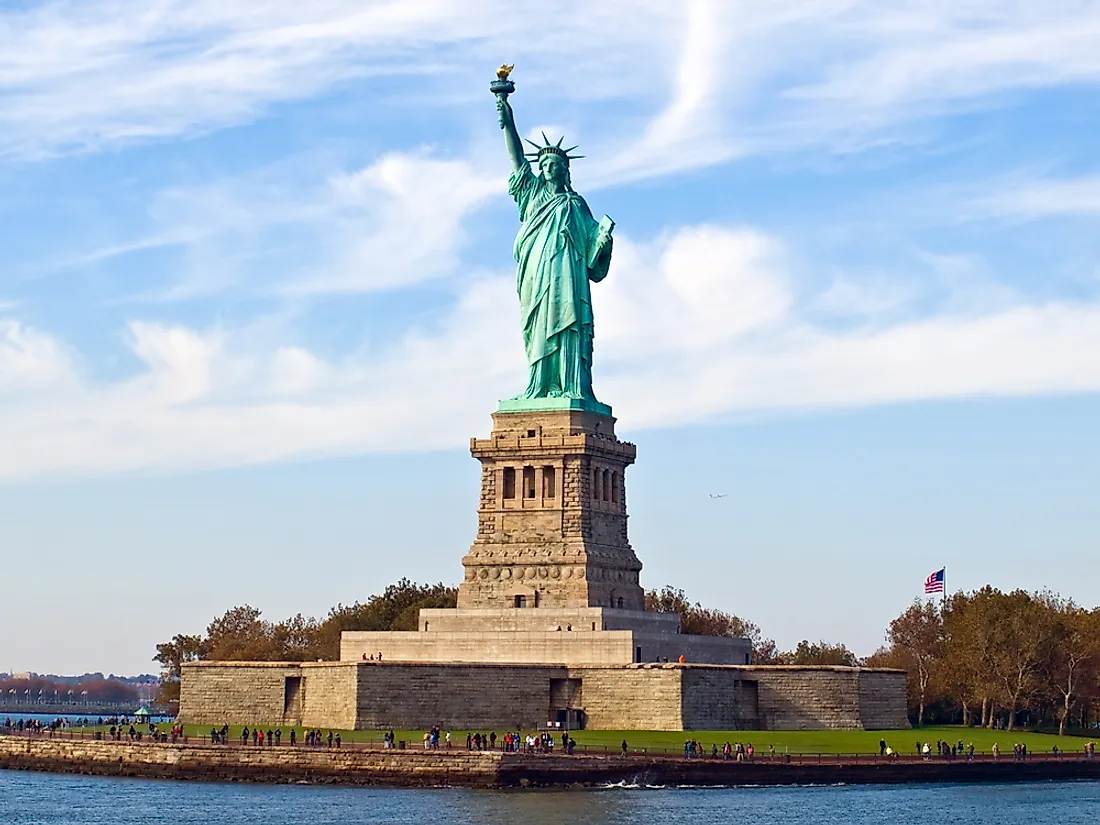Which Country Gave America the Statue of Liberty?

Sculptures are artistic renderings of objects and people that are carved or constructed from materials like wood or metal, and can be created for reasons, including honoring a person or for religious significance. Statues are freestanding sculptures and can be found in most cities around the world, where they contribute to the history and culture of the people. Some of the most easily recognizable statues around the world include the Statue of Liberty, located in New York City, USA, as well as The Thinker situated in Paris, France. Although the Statue of Liberty is located in the United States, it was designed by French artist Frédéric Auguste Bartholdi and given to the American people as a gift from France.
Origin of the Idea
Although the origins remain uncertain, the idea of the Statue of Liberty is sometimes attributed to Édouard de Laboulaye, who a leading voice in the French anti-slavery movement at that time. According to some sources, he first spoke about it in a conversation with Frédéric Auguste, who would later design the statue, as a memorial to the independence of the United States. Other records indicate that Édouard was greatly inspired by the American Civil War and subsequent freedom for the American slaves, and therefore proposed the construction of the statue as a gift to commemorate the occasion.
Design of the Statue of Liberty
To adequately capture the essence of American liberty, Frédéric Auguste drew inspiration from various mythical females such as Libertas, a goddess of Ancient Roman culture who symbolized freedom, as well as Columbia, the female personification of the United States. When observed from behind, the statue appears to be moving forward, which Auguste used as a symbol of progress. The torch in the statue’s right hand was also a symbol for peace and progress, while the tablet in the left hand was inscribed with the date that the United States declared its independence. Frédéric’s decision to cloth the statue in long flowing robes was to avoid evoking sentiments of revolution as the image of Libertas had been previously used to commemorate revolutions, such as the French Revolution of 1830.
Replicas of the Statue
Given the strong sentiments evoked by the statue, a large number of replicas have been created for different reasons. Americans living in Paris were presented with a smaller version of the statue to commemorate the creation of the original. The Paris replica is located in Île aux Cygnes, and was positioned in such a way that it appears to be facing the American statue. A 30-foot tall replica can also be found at the Brooklyn Museum, although it was initially located on Manhattan’s Liberty Warehouse. The statue of liberty was a great source of inspiration to the artists who designed the Goddess of Democracy statue. Images of the statue also appear on American coins and stamps.
Significance of the Statue of Liberty
The statue is an integral part of American culture, as it symbolizes the ideals of the American people. The statue also attracts a substantial number of tourists, which contributes significantly to the region’s economy.











